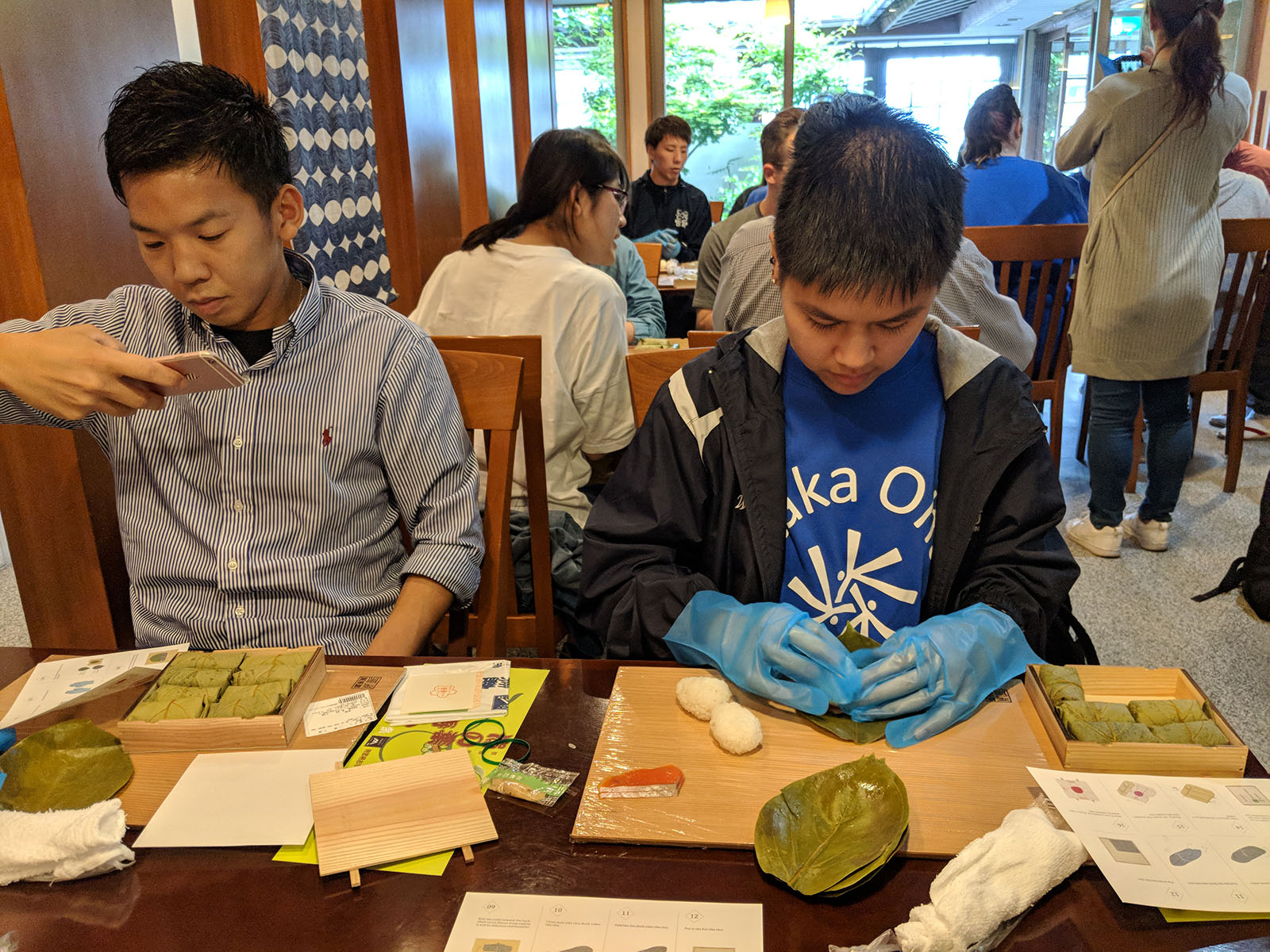
Maker:L,Date:2017-9-21,Ver:5,Lens:Kan03,Act:Kan02,E-Y
Before leaving for our two-week study abroad trip to Japan, we were tasked to read various sources on: war, culture, religion, food, lifestyle, nuclear weapons, World War II memoirs, and other aspects of Japanese life in order to help prepare us for what we were going to experience. Combining this newfound knowledge with what I learned in grade school, I thought that I knew just about everything there was to know about World War II. Coming to Japan, I quickly recognized my ignorance, as I was mistaken.
My lack of knowledge struck me most when, on a rainy Sunday morning, we went to the Nagasaki Atomic Bomb Museum. It was at the museum that I found out cranes are a symbol of peace in remembrance of a student, Sadako Sasaki. Sadako folded one thousand paper cranes before her death, which was caused by the effects of radiation. These cranes are found all throughout Japan, especially in museums like the Nagasaki Atomic Bomb Museum, as well as peace parks. Aside from the plethora of cranes scattered throughout the museum, there were also multiple water fountains, sources, and pools.
At first, I thought that it was just a simple decoration or something to fill the spaces where they were placed. Continuing through our day, we had the opportunity to hear from a hibakusha (survivor of the atomic bombings) who shared an emotional and impactful story about his and his family’s experience. It was after hearing the hibakusha speak that our translator revealed to us the reason behind the numerous sources of water. It was explained to us that after the bombing, those who were suffering asked for water when they were in pain, rather than help or other forms of aid. The hibakusha told us that when he saw his dad, covered in burns from the bomb, he asked for water as well.
I remembered that one of the memoirs I read, titled A Dimly Burning Wick, featured testimonies from a hibakusha. The hibakusha came across many children immediately after the bombing and shared the same theme. These children, who were so badly injured and burned, all asked for one thing—water. Thinking of all of these things and the connection between water and the bombing completed the puzzle for me and touched me in a way I will never forget.
I was stirred thinking about how many water sources I saw throughout the museum. And to know now that it was not just a decoration or something to fill space, but a tribute to the war and both survivors and victims. I found this to be such a subtle, but impactful concept. We saw more of these water tributes while walking through a nearby peace park. At the bottom of one of the monuments, people were placing water bottles (and there were many of them) for the same reason—to commemorate the victims.
Remember when I said I thought I knew everything there was to know about World War II? I was wrong. I did not know about Sadako Sasaki and her story, or even that cranes were a symbol of peace. I also did not know just how important water was to the victims and that it also symbolizes peace throughout Japan. This was the first of many learning experiences I had when in Japan and one that will stay with me forever. I can now look at cranes and water as a symbol of peace from a land that has experienced so much trauma and destruction.
From this newfound understanding, I now know where I stand on the issue of the bombings of World War II and of war, in general. I believe that nuclear weapons should be eliminated completely so that tragedies such as those at Nagasaki and Hiroshima do not happen again in the future. Although conflicts may arise between nations, we should not turn to war to solve them, but instead, look for compromise and a more peaceful way to handle these struggles.
Japan is a beautifully resilient and forgiving country that advocates for peace, even after the tragic events they endured. I hope that other nations can learn from Japan’s suffering and their eventual rebirth into a country of peace. I am thankful to have experienced both the stories and images of anguish, as well as the beauty Japan now emits, and I hope that other nations follow their lead, resulting in a world of peace.